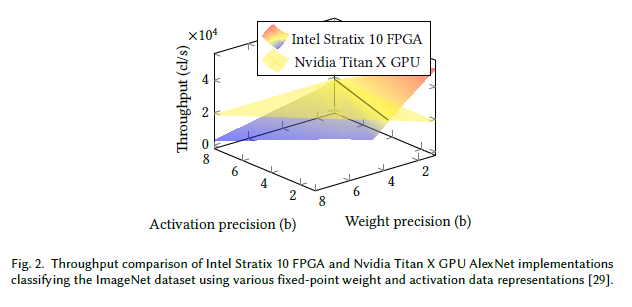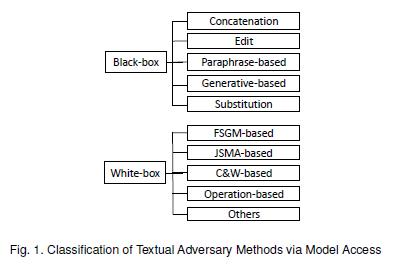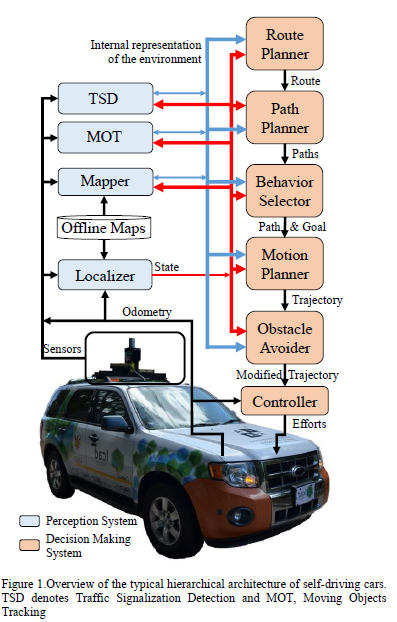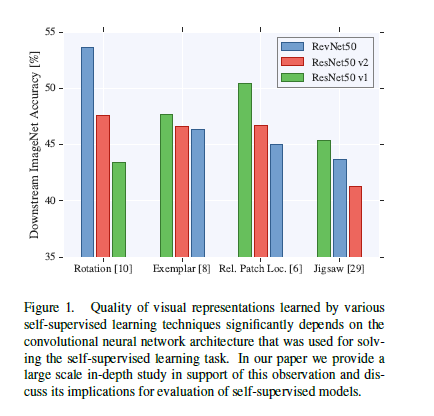 In this recurring monthly feature, we filter recent research papers appearing on the arXiv.org preprint server for compelling subjects relating to AI, machine learning and deep learning – from disciplines including statistics, mathematics and computer science – and provide you with a useful “best of” list for the past month. Researchers from all over the world contribute to this repository as a prelude to the peer review process for publication in traditional journals. arXiv contains a veritable treasure trove of learning methods you may use one day in the solution of data science problems. We hope to save you some time by picking out articles that represent the most promise for the typical data scientist. The articles listed below represent a fraction of all articles appearing on the preprint server. They are listed in no particular order with a link to each paper along with a brief overview. Especially relevant articles are marked with a “thumbs up” icon. Consider that these are academic research papers, typically geared toward graduate students, post docs, and seasoned professionals. They generally contain a high degree of mathematics so be prepared. Enjoy!
In this recurring monthly feature, we filter recent research papers appearing on the arXiv.org preprint server for compelling subjects relating to AI, machine learning and deep learning – from disciplines including statistics, mathematics and computer science – and provide you with a useful “best of” list for the past month. Researchers from all over the world contribute to this repository as a prelude to the peer review process for publication in traditional journals. arXiv contains a veritable treasure trove of learning methods you may use one day in the solution of data science problems. We hope to save you some time by picking out articles that represent the most promise for the typical data scientist. The articles listed below represent a fraction of all articles appearing on the preprint server. They are listed in no particular order with a link to each paper along with a brief overview. Especially relevant articles are marked with a “thumbs up” icon. Consider that these are academic research papers, typically geared toward graduate students, post docs, and seasoned professionals. They generally contain a high degree of mathematics so be prepared. Enjoy!
Go-Explore: a New Approach for Hard-Exploration Problems
A grand challenge in reinforcement learning is intelligent exploration, especially when rewards are sparse or deceptive. Two Atari games serve as benchmarks for such hard-exploration domains: Montezuma’s Revenge and Pitfall. On both games, current RL algorithms perform poorly, even those with intrinsic motivation, which is the dominant method to improve performance on hard-exploration domains. To address this shortfall, this paper introduces a new algorithm called Go-Explore.

Deep Neural Network Approximation for Custom Hardware: Where We’ve Been, Where We’re Going
Deep neural networks have proven to be particularly effective in visual and audio recognition tasks. Existing models tend to be computationally expensive and memory intensive, however, and so methods for hardware-oriented approximation have become a hot topic. Research has shown that custom hardware-based neural network accelerators can surpass their general-purpose processor equivalents in terms of both throughput and energy efficiency. Application-tailored accelerators, when co-designed with approximation-based network training methods, transform large, dense and computationally expensive networks into small, sparse and hardware-efficient alternatives, increasing the feasibility of network deployment. This article provides a comprehensive evaluation of approximation methods for high-performance network inference along with in-depth discussion of their effectiveness for custom hardware implementation.

Generating Textual Adversarial Examples for Deep Learning Models: A Survey
With the development of high computational devices, deep neural networks (DNNs), in recent years, have gained significant popularity in many Artificial Intelligence (AI) applications. However, previous efforts have shown that DNNs were vulnerable to strategically modified samples, named adversarial examples. These samples are generated with some imperceptible perturbations but can fool the DNNs to give false predictions. Inspired by the popularity of generating adversarial examples for image DNNs, research efforts on attacking DNNs for textual applications emerges in recent years. However, existing perturbation methods for images cannotbe directly applied to texts as text data is discrete. This article reviews research that addresses this difference and generatetextual adversarial examples on DNNs.

Revisiting Self-Supervised Visual Representation Learning
Unsupervised visual representation learning remains a largely unsolved problem in computer vision research. Among a big body of recently proposed approaches for unsupervised learning of visual representations, a class of self-supervised techniques achieves superior performance on many challenging benchmarks. A large number of the pretext tasks for self-supervised learning have been studied, but other important aspects, such as the choice of convolutional neural networks (CNN), has not received equal attention. Therefore, this paper revisits numerous previously proposed self-supervised models, conducts a thorough large scale study and, as a result, uncover multiple crucial insights. The code accompanying this paper can be found HERE.
 This paper surveys research on self-driving cars published in the literature focusing on autonomous cars developed since the DARPA challenges, which are equipped with an autonomy system that can be categorized as SAE level 3 or higher. The architecture of the autonomy system of self-driving cars is typically organized into the perception system and the decision-making system. The perception system is generally divided into many subsystems responsible for tasks such as self-driving-car localization, static obstacles mapping, moving obstacles detection and tracking, road mapping, traffic signalization detection and recognition, among others. The decision-making system is commonly partitioned as well into many subsystems responsible for tasks such as route planning, path planning, behavior selection, motion planning, and control. The survey presents the typical architecture of the autonomy system of self-driving cars, and also reviews research on relevant methods for perception and decision making.
This paper surveys research on self-driving cars published in the literature focusing on autonomous cars developed since the DARPA challenges, which are equipped with an autonomy system that can be categorized as SAE level 3 or higher. The architecture of the autonomy system of self-driving cars is typically organized into the perception system and the decision-making system. The perception system is generally divided into many subsystems responsible for tasks such as self-driving-car localization, static obstacles mapping, moving obstacles detection and tracking, road mapping, traffic signalization detection and recognition, among others. The decision-making system is commonly partitioned as well into many subsystems responsible for tasks such as route planning, path planning, behavior selection, motion planning, and control. The survey presents the typical architecture of the autonomy system of self-driving cars, and also reviews research on relevant methods for perception and decision making.

Sign up for the free insideBIGDATA newsletter.





Speak Your Mind